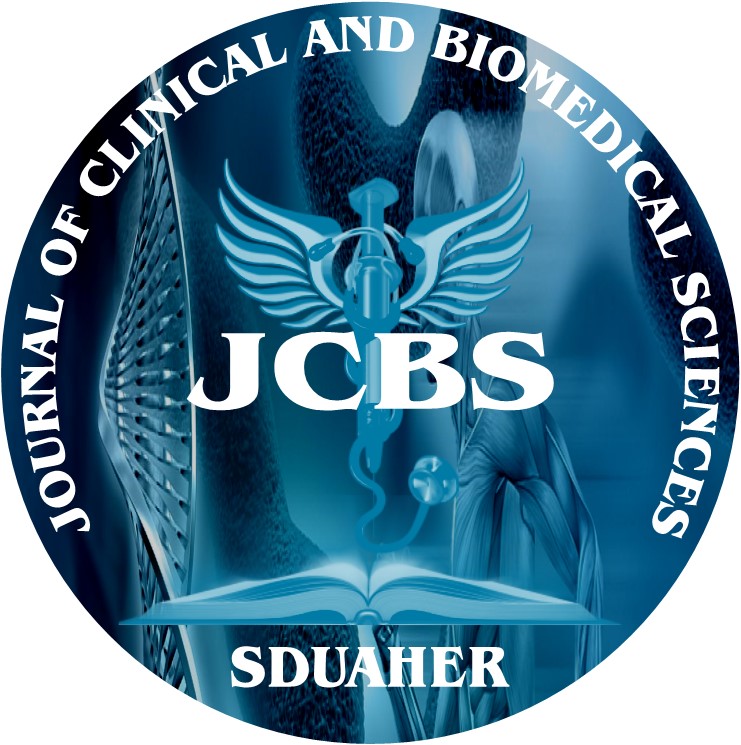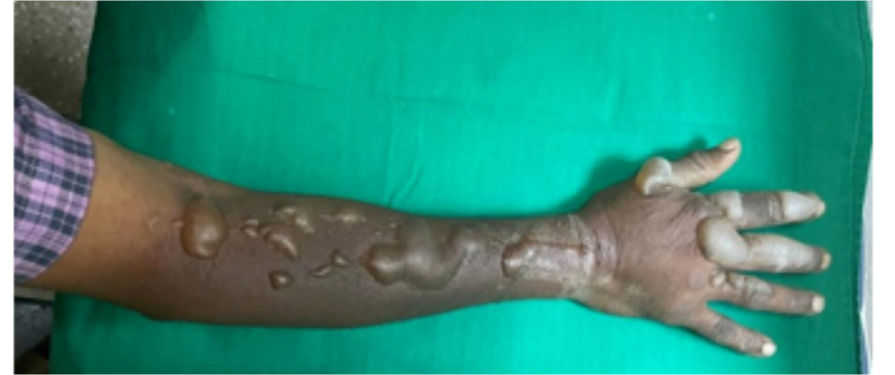


Journal of Clinical and Biomedical Sciences
DOI: 10.58739/jcbs/v13i1.22.120
Year: 2023, Volume: 13, Issue: 1, Pages: 19-21
Case Report
Rajashekar T S1, Suresh Kumar K2, Harish Prasanna R3, Hussain K3, Sumedha T3, Hanumanthayya K4,*
1 Professor & HOD, Department of Dermatology, Sri Devaraj Urs Medical College, Sri Devaraj Urs Academy of Higher Education and Research, Tamaka, Kolar, Karnataka, India
2 Assistant Professor, Department of Dermatology, Sri Devaraj Urs Medical College, Sri Devaraj Academy of Higher Education and Research, Tamaka, Kolar, Karnataka, India
3 PG Student, Department of Dermatology, Sri Devaraj urs Medical College, Sri Devaraj Urs Academy of Higher Education and Research, Tamaka, Kolar, Karnataka, India
4 Professor, Department of Dermatology, Sri Devaraj Urs Medical College, Sri Devaraj Urs Academy of Higher Education and Research, Tamaka, Kolar, Karnataka, India
*Corresponding author email: [email protected]
Received Date:17 October 2022, Accepted Date:22 December 2022, Published Date:21 May 2023
Contact dermatitis (CD) is commonly seen in the dermatology OPD cases. 10 to 20% of all new cases will be suffering from contact dermatitis. The simple meaning of contact dermatitis is, when a substance come in contact with the skin, the substance may directly damage the skin by its cytotoxic effect, or by stimulating immune competent cells to attack skin and cause damage to the skin. Acids like HCL, HNO3, H2SO4 and alkalis like dish washing soaps, detergents, ammonia, potassium hydroxide, sodium hydroxide and cow urine will damage the skin immediately, and the resultant skin damage is called “Irritant Contact Dermatitis (ICD)”. Some substances of smaller molecular weights (haptens, 500 to 1000 nm) will penetrate the skin, combine with tissue proteins, and then the antigenicity of tissue protein will get altered, the antigen presenting cell will take up this altered molecule, processes it and present it to immune competent cell CD4+T Lymphocyte. Activated CD4+T lymphocyte will proliferate, few become memory cells, and few become sensitized cells. If same hapten come in contact with the body second time, immune competent cells will react aggressively, person will develop inflammation of skin. This reaction is called “Allergic Contact Dermatitis (ACD). Here we are reporting a case of ICD.
Keywords: Irritant Contact Dermatitis, Allergic Contact Dermatitis
This is an open-access article distributed under the terms of the Creative Commons Attribution License, which permits unrestricted use, distribution, and reproduction in any medium, provided the original author and source are credited.
Published By Sri Devaraj Urs Academy of Higher Education, Kolar, Karnataka
Subscribe now for latest articles and news.